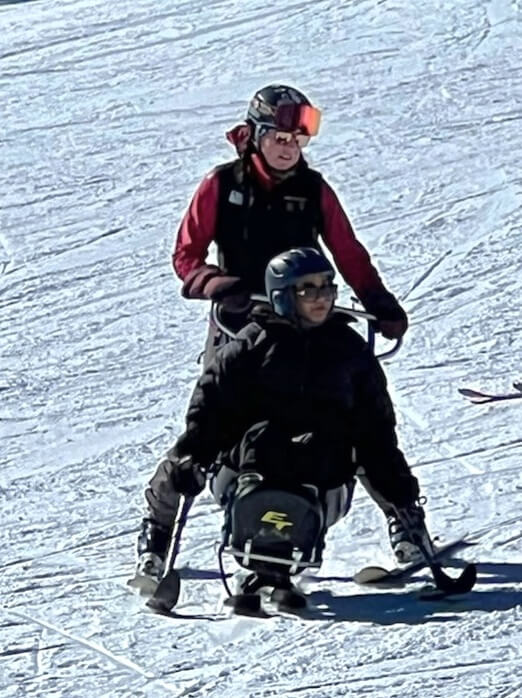Christine Morris
I want to be able to dance. I know this is a goal I’m going to achieve.Christine Morris
Christine’s Story
On July 23rd, 2006, Christine was a passenger in her friend’s car. Unfortunately, her friend lost control of the vehicle and ended up in a devastating rollover. The roof of the car collapsed on Christine’s side of the vehicle. She obtained a C5/6 spinal cord injury resulting in paralysis. Filled with overwhelming gratitude, Christine told us her life story before and after her injury.
At the time of her injury, Christine was a “typical 22-year-old,” attending full-time college, majoring in social work, and working part-time in a restaurant as a server. But once she sustained her injury, Christine put everything on hold and dedicated her time to recovery. In the 16 years since then, Christine earned her bachelor’s and master’s degrees in psychological counseling. She does volunteer work within the community and works part-time at a local university.
Over the years, Christine had opportunities to participate in trial studies for spinal cord injury recovery. But the treatments were invasive. Christine did not want to undergo invasive surgery or receive an implant. However, when Christine’s trainer informed her of the non-invasive
SpineX transcutaneous upper limb clinical trial, she was excited to know more. “The SpineX SCONE study was the perfect match for me and my recovery goals,” she said with a big smile on her face. “I did not want to cause further injury to my body with subdermal implants,” explained Christine.
INJURY
July 23, 2006 – Sustained a C5/C6 level injury in a car accident
STUDY PARTICIPATION
- SpineX Upper Limb Clinical Trial
- Gripping Recovery
- In-clinic participation from February 2021-to-June 2021
- At home participation from February 2022 through June 2022
- Regained dexterity in her fingers, wrist fluctuation, shoulder, upper body, and trunk mobility and stability
Treatment
Christine participated in the SpineX SCONE upper limb clinical study from February-to-June of 2021 and then again in the at-home portion of the study from February 2022 to June 2022. She worked closely with her trainers and is excited to share that she regained many functions back since the initial injury.

Christine’s Progress
Christine continues to need help transitioning from sitting to standing. Before participating in the SpineX SCONE study, Christine could only stand with assistance. She did not have the muscle control to sustain a standing position. But now, once Christine is in an upright position, her glutes, core, and trunk muscles are strong enough to support her efforts to stand. And she can stand for about five minutes at a time! “Thanks to the SCONE device, this is life-changing!”
In addition to Christine’s ability to stand with minimal assistance, she has regained her finger dexterity and strengthened her wrist fluctuation. She used to use her spasms to move different parts of her body, but now she can conduct these movements voluntarily. Plus, using the SCONE device has enabled more stability in her right shoulder, which suffered damage from being secured in her seatbelt during the accident. She’s also noticed overall strength and mobility in her trunk and upper body. Especially on her right side which was weaker.
We asked Christine about her goals and what she hopes to achieve. She told us she’s always loved to dance and is confident she will dance again someday. Christine is also determined to walk again. “I have a huge relationship with Christ. I’ve always believed it would be possible for me to walk again, but I wasn’t sure how it would happen,” said an emotional Christine. “But being a part of the SpineX study has allowed the instrument (device) to be used so that walking can and is happening for me,” she said as she wiped away tears of joy andgratitude. We are so happy for Christine and look forward to the day she can and will dance again.
